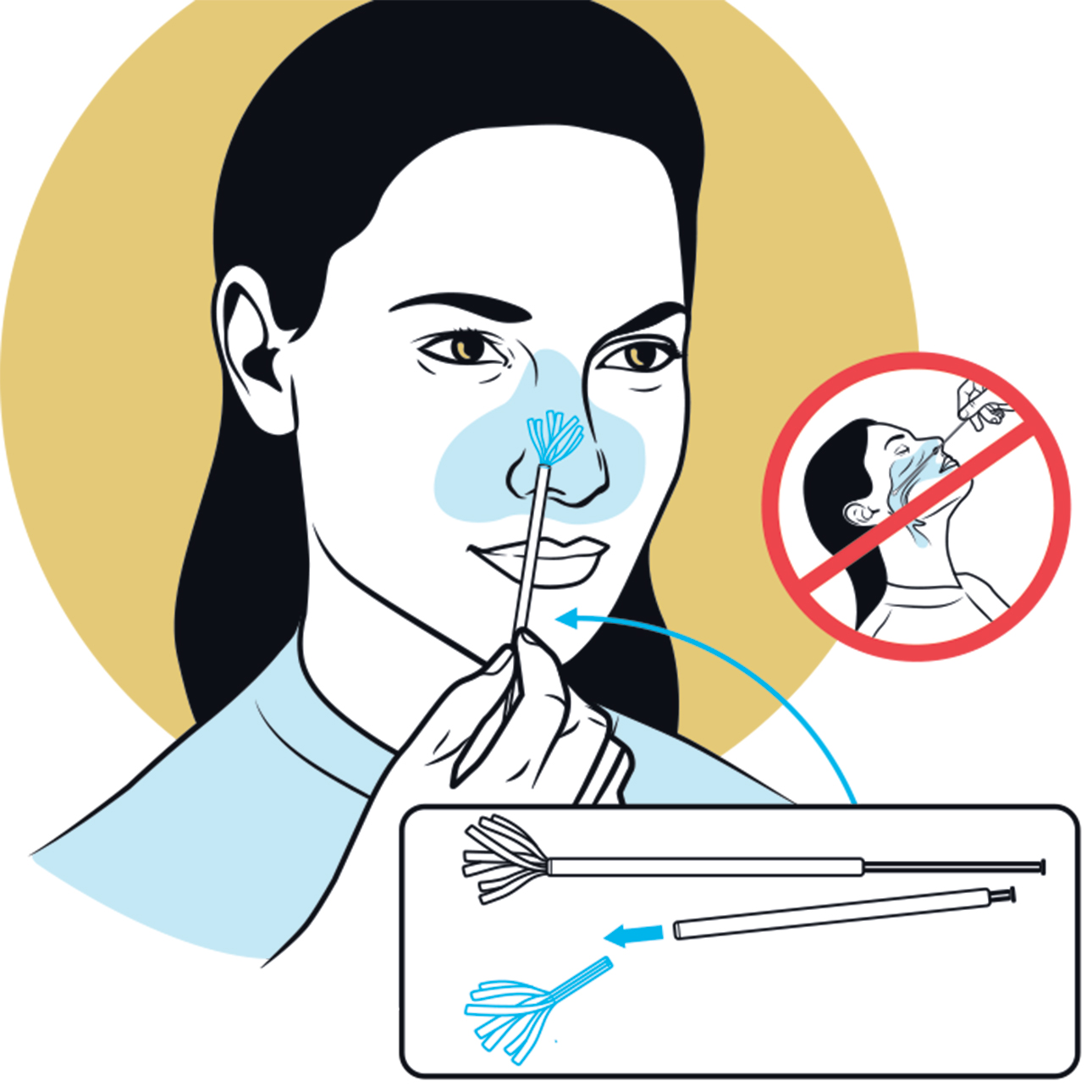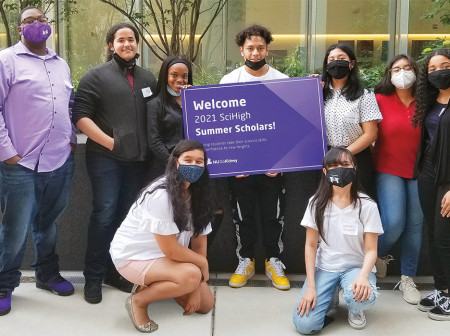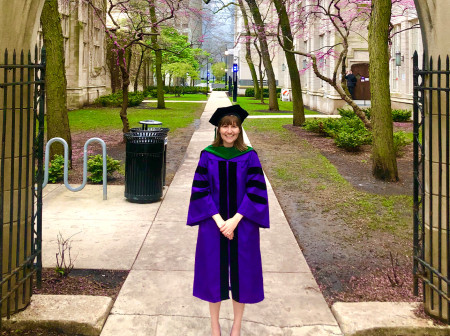Early in the coronavirus pandemic it became clear that a shortage of testing supplies was one of the bottlenecks that limited more expansive testing. Matthew Grayson, professor of electrical and computer engineering, assembled a team to design a patent-pending prototype for a nasal swab. The team, which includes polymer engineer Jun Peng, a postdoc in Grayson’s lab, and Nancy Rivera-Bolaños, a third-year biomedical engineering doctoral student in professor Guillermo Ameer’s group, created a swab that can be mass produced at a low cost from readily available medical-grade materials. Equally important, this new nasal swab could be mailed to the person’s home and self-administered. Susan Park, a fifth-year doctoral student in microbiology and immunology under professor Richard Longnecker, is studying the new swab design’s effectiveness using an RNA virus. Using plaque assays to determine virus concentration, she found the team’s new swab collected three to four times more viral particles than traditional swabs. More tests are planned, eventually in a clinical setting.
Self-testing
Whereas standard nasopharyngeal swabs require a health care professional to collect a sample from the back of the throat, this swab is designed to be self-administered at the front of the nose. Self-testing is necessary to meet the increased demand to safely open businesses and schools.
Tip Release
The swab tip can be released from the hollow stem with the help of a plunger, so bare hands can be used without risk of sample contamination.
More Surface Area
The tip has a mop-like design, creating more sampling surface than a traditional swab, while being more comfortable.
Automated Analysis
Conventional nasopharyngeal swabs leave a broken stem in the collection vessel that impedes pipetting. The new tip-release feature eliminates this obstruction to allow unimpeded automated pipetting and making massive-scale automated analysis possible.
Personalized Result Tracking
The swab team is working with computer scientist Nabil Alshurafa, assistant professor of preventive medicine, on developing a smartphone app for result tracking.
For more information, email Matthew Grayson, or learn about royalty-free licensing of the patent-pending swab design: https://nulive.technologypublisher.com/tech/A_New_Design_of_Nasal_Swab




Reader Responses
When will this swab be “released”? At least in Massachusetts, COVID-19 self-testing is already prevalent at CVS drive-up sites. Self-testing is unpleasant, but not as unpleasant as when a professional administers it, which begs the question of whether it is as accurate, presuming a higher degree of unpleasantness correlates to a higher degree of accuracy.
—Alexander Zaretsky '99, Lenox, Mass., via Northwestern Magazine
Increased surface area collection. Well done!
—Meg Harlin Berlin, Md. , via Northwestern Magazine
This is great news. My fiancé and I recently had to take a COVID-19 test and were astounded at how far back the swab had to go. So unpleasant. Glad to see that Northwestern is at the forefront of innovation in the midst of the global pandemic.
—Josh Zulli Santa Clara, CA
No one has commented on this page yet.
Submit a Response